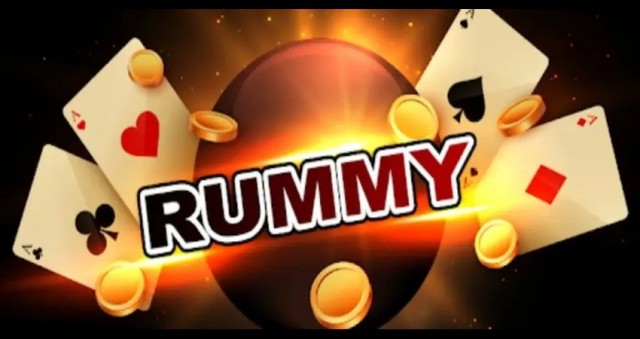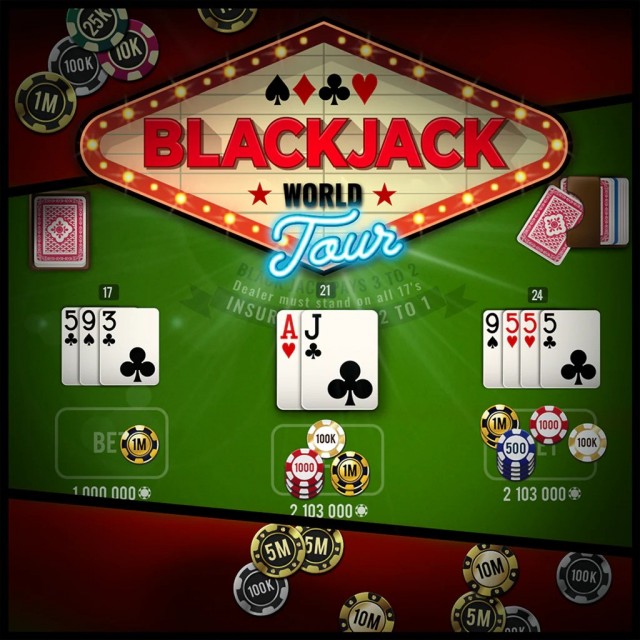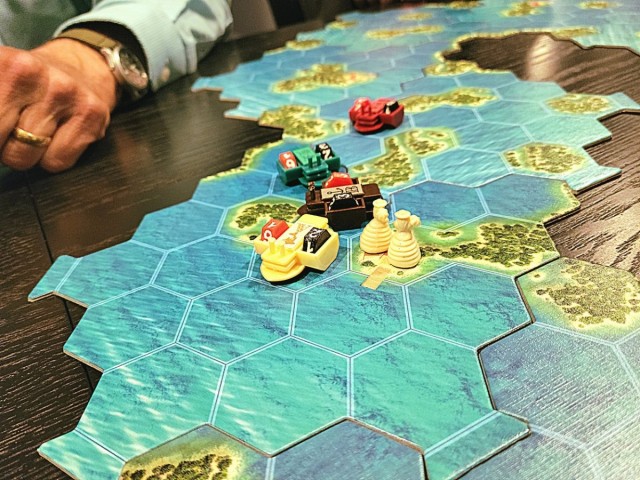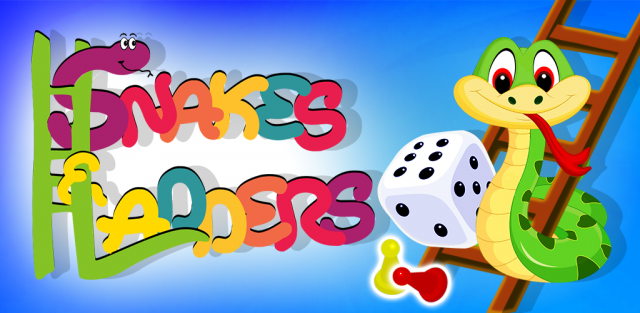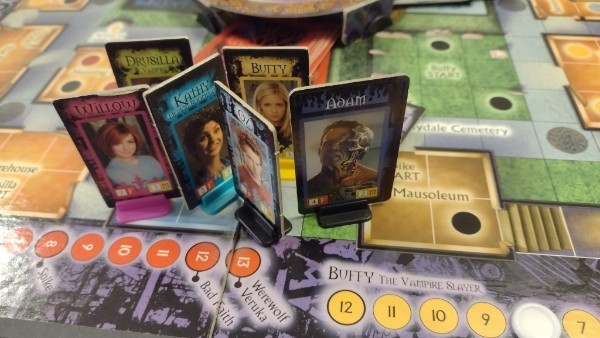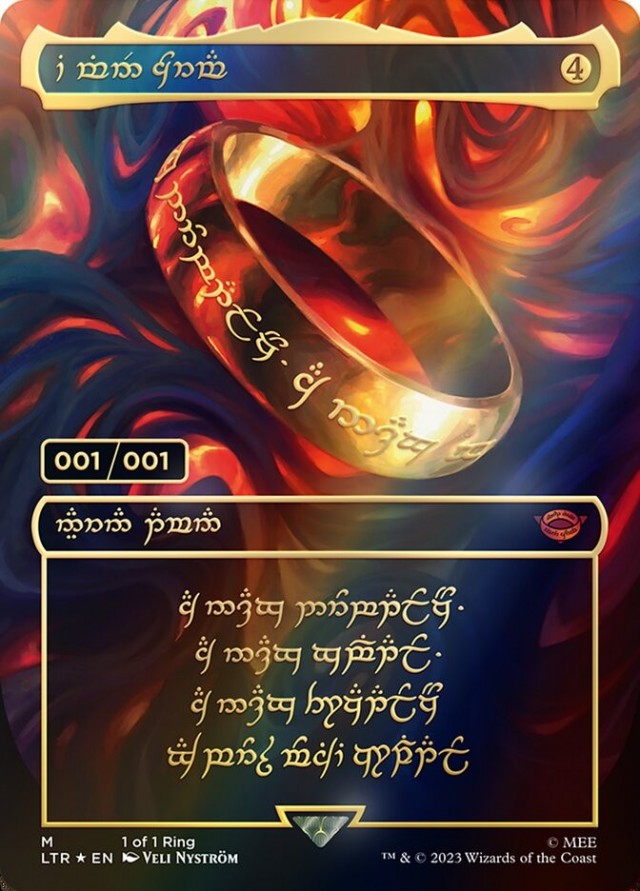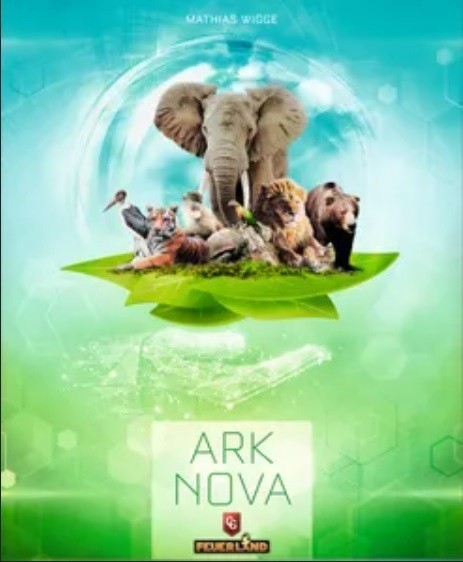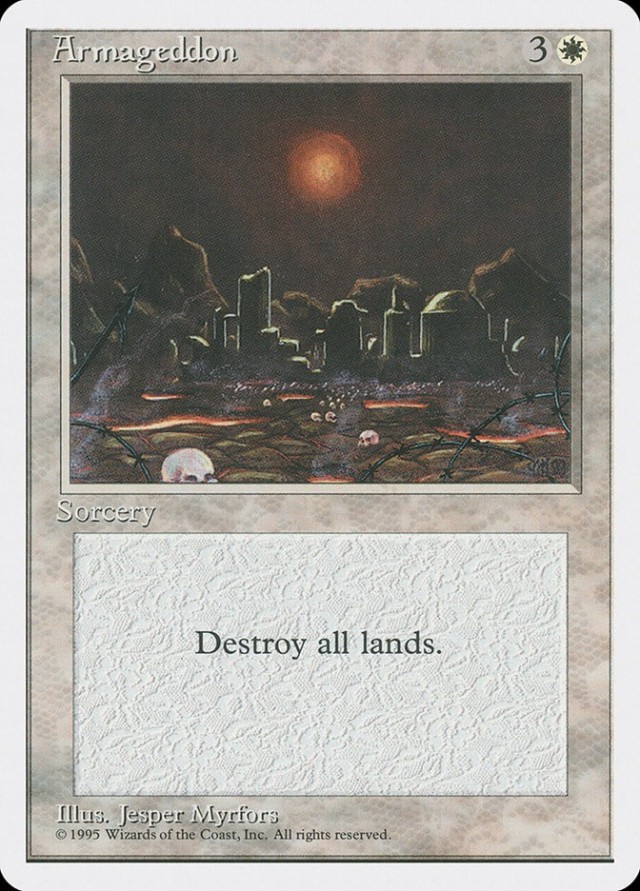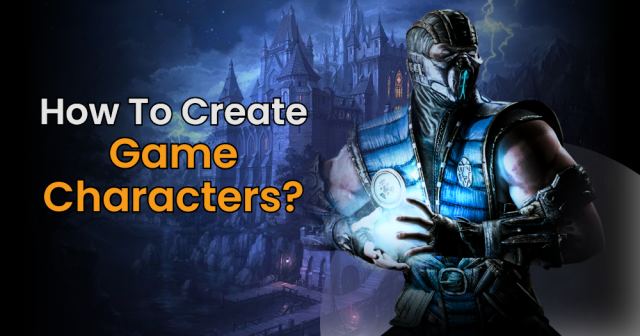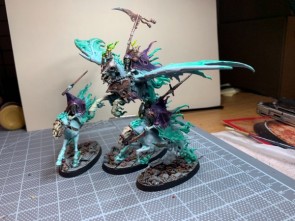My First Warhammer Tournament: An Autobiography, Part 2
My first full and complete game of Age of Sigmar came just three weeks ago. Why, if I’d been painting and collecting models for so long, had I not played a complete game before? I have reasons.
1) The place I came from had no small number of game stores, but only one of them served miniatures gamers in any serious way, and the place was creepy. Not just normal, game-store creepy, but “we were just playing Skrewdriver on the stereo, we turned it off when you walked in, and now we’re watching you and waiting for you to leave the store so we can turn it back on again.” That sort of creepy. By contrast, the place I’m going to in Chicago is a step above normal creepy. It has a diverse, helpful and friendly clientele and staff. They have a whole basement devoted to wargaming, and the largest collection of free-to-play board games I have ever seen. They’re well organized, too, running regular and well-attended tournaments.
2) Playing games, like laughter, is hard to define on the emotional spectrum. The Japanese have a word for flavors that are not quite sweet and not quite salty, but something in between: umami. Gaming generates emotional umami. Sometimes it’s triumphant-but-lonely and at other times it’s covetous-but-friendly. There is an umami that non-miniature gamers have for the subset of miniatures gamers, and it’s the weirdest umami of all. It’s sort of “two parts disgust, but admiration with amusement” or perhaps it’s “curiosity and fear, but admonishment.” I don’t know, but what I do know is that my gamer friends do not want to touch this shit with an 18-inch ruled template.
3) I do have one friend who came reluctantly with me into the hobby, looked into the abyss, shrugged, and turned away. He was a Necromunda player from back in the day, and was enthusiastic when I first turned him on to Frostgrave. We played it a few times before realizing that we just didn’t love the d20 in that game. We moved on to others, trying to scratch the itch. Infinity, 40k, Rogue Stars, new Necromunda, Dragon Rampant, etc, with all of them Goldiloxing us right on out the door. I got a pay bump a year ago and bought him the big Holiday Bundle set for Kharadraon Overlords. He painted them with enthusiasm. But that didn’t take either. We’d play a few 900 point games—he was rightly wary of buying in past that point—muddle through the rules, and usually mutually condede halfway through. Once, we conceded while setting it up—the idea of learning and committing to the randomly-rolled terrain rules was just too much. My inkling is that, once we got accustomed to the rules, we’d like them better. He conceded that, but also conceded that there was no way he was going to commit to hundreds of dollars of stuff to find out whether that was true. The logic of that was undeniable. Our interest was rekindled briefly by Sigmar Skirmish, but it turned out that was exactly as complex as the main game, only smaller. As far as I know, he still has his Kharadron Frigates displayed prominently in his house, a locus of pride, but never of fun.
4) Then there’s my wife, who loves me enough to play with me on special occasions, bless her heart. Her verdict is always the same. “I like what you’ve done with the figures, and I love the Sylvaneth as an idea (that’s “tree people” to you mortals), but this is a game where you know the most stupid rules and therefore you win. See you next birthday.”
--
Early in January, a couple of weeks after settling in to Chicago, I packed up a foam carrier and went to the new friendly place. I brought Nurgle with me, everything I had. Games Workshop produces a myriad of products, and many of them overlap; Nurgle are the demonic hordes of blight, and the figures work, mechanically and thematically, in both the fantasy setting of Sigmar as well as the more-popular Warhammer 40,000 setting. I figured if no one was playing one, I could coax someone into playing another. (They’re also very fun to paint, their bloated, festering skin allowing for improvisation and a multitude of painterly sins. They’re among my best looking models).
They advertised miniatures gaming on Saturday and Wednesday nights, and I’d gone on a Saturday. It turns out that the place was packed, having just begun a “slow grow” tournament in 40k, modeled after the low-model-count Path to Glory games pioneered in the Sigmar setting. The friendliest people there were playing games other than Games Workshop branded games. One patiently extolled the virtues of Warmachine to me, while someone else explained the basic rules to Bolt Action, a WW2 miniatures games designed independently by some of the prodigal founders of GW. He was playing the Nazis with more enthusiasm than I would have, but then, he had modelled one of his figures after the Red Skull, so I gave him the benefit of the doubt. I made a mental note to take a good look at the Soviet Army, the next time I was interested in picking up a new system.
The 40k players, on the other hand, weren’t un-friendly. They were just deeply absorbed. It looked as if they had picked up a few new players as there were a lot of people nose-deep in rulebooks. I talked briefly with someone who told me that he was slowly collecting a Daughters of Kaine Army—a whole army of witch elves who worship at an Alter of blood—but that he didn’t have his army with him. He very helpfully told me to check out the store’s facebook page, and expressed enthusiasm about playing at a later date. I gawked at some games, watching other player’s inscrutable umami experiences. I took off some time later, having not played, but enthusiastic to try.
--
The next week, after having coordinated in advance, I met the Daughters of Kaine player for a friendly, 1000-point game at the store. My Nurgle army is vast and uncoordinated, so this time I figured I’d bring my Nighthaunt army with me. The Nighthaunt are a faction recently supported by GW after years of neglect. I won’t get into the commercial decisions that led GW to rid themselves of the “Old World” of commercial products related to Warhammer Fantasy and replace them with a nearly-identical New World with updated rules except to say that those who did not immediately burn their armies on barbecue pits in protesthave long played a game of “when will my models be supported in the new system.” The Nighthaunt battletome, featuring an army of ghosts and spectral chariots, was given a battletome last summer, making them a recent, hot faction.
We showed up early and secured a table. I had my rules spread out in front of me; he did not. I apologized for being a little rusty on things, but secretly sighed in relief to see that he seemed as underprepared as I was. I was wrong. He had all of his rules memorized, and had memorized most of my rules, as well.
I was excited to see what color scheme he chose for his Daughters of Khaine, and was disappointed to see that he’d not even primed them yet. They were just wiry bits of grey plastic superglued to black bases. “Sorry about that,” my opponent said. “I’m going to try to get these painted in time for the tournament.”
“Oh, there’s a tournament?” I asked.
“Yeah, in February. Will you sign up? It should be fun.”
“I’m definitely thinking about it,” I said.
“We need players. Most people here are 40k.”
First, we rolled for Terrain rules. This was something I was used to skipping, as my friend and I had always thought of terrain rules as just an extra layer of rules, and we were always just a step away from being in “learning mode.” We dutifully rolled on the chart, assigning rules to random bits of scenery like “At the start of your hero phase, you can pick one friendly unit within 1" of a Damned terrain feature to make a sacrifice. If you do so, that unit suffers D3 mortal wounds, but you can re-roll hit rolls of 1 for it until your next hero phase.”
Next, we rolled for the Realm characteristics, something I had only vaguely realized was a thing. Upon rolling and discovering that we were fighting in the “Realm of Fire,” we rolled again and discovered that all armies had their “Flying” characteristic negated, and their movement reduced. We both acknowledged that this was tough luck for a Nighthaunt army, as one of their chief characteristics is that the whole army can fly, and that one of their secondary characteristics is that they tend to be fast.
Next we used Open War cards to randomize setup, which placed me at the dead center of the board, and his Daughters of Kaine on either side of me. The mission was not objective based, but simply to cause as many casualties as possible.
I won the roll off that gave me say in who started first. As I was rusty, I gave the initiative to my opponent. Under any circumstance, this was a mistake. If I understood the axiom that, in Warhammer games of all stripes victory often goes to the person who gains the first initiative, and that much of the metagame is about mitigating the results of that first strike, now I’d come to understand it through hard experience.
My opponent started his “Hero Phase” by listing things. A lot of things. “First,” he said, “I’m going to spend a Command Point to ‘Evoke the Cauldron of Blood.’” (I will be absolutely misrepresenting and mislabeling the names and effects of various Daughters of Kaine abilities for this battle report, as I can’t remember them, and I can’t be arsed to recreate them from exhaustive post battle research, which, I might add, is absolutely something you must do for any army you intend to fight and win against). The Cauldron allowed him to run faster, or something. “Next, I will evoke the Mindrazor.” If I recall, this allowed his battleline assassin women an extra attack in the combat phase. “Now I will evoke the Blessing of Blood.” Whatever this spell or ability was actually called, it allowed a supernumerary save for the Daughters of Kaine, with the added effect that it dealt back Mortal Wounds—that is, wounds you can’t protect yourself from—on a Save result of six. There were numerous other buffs and abilities evoked during this initial round, including a spell that did Mortal Wounds to one of my units, killing one or two of them instantly.
None of this was surprising to me. Much of my preparation had come down to trying to keep straight all of this business in preparation of our game. But seeing it done so efficiently was mind-boggling. It occurred to me that my opponent had written computer code for his army, and now he was executing the code, using the hardware of a table and plastic models.
Next came the Movement Phase. Part of my reasoning for giving my opponent the initiative, besides wanting to see a turn played in full before doing my own, was that, since I was halfway across the board, I could coax his slowed-down Daughters into position and initiate the attack on my turn. The Daughters halved the distance between us. The Shooting Phase came and went without incident (neither of us brought ranged fighters), and then the Charge Phase happened. Charging is a universal aspect in miniatures wargaming, handled in different ways from game to game. The thematic assumption is always that Charging an opponent in melee combat gives the attacker some superhuman burst of adrenaline, assisting them in the preceding melee combat. Warhammer games handle this unfortunate inevitability in what is, to my mind, an incredibly gamey and artificial manner. On the Charge phase, you roll two dice, add them together, and, if it exceeds the distance between you and an opponent, you close the distance, thus allowing the unit to enter into melee combat. Thus, lithe scissor women with a base movement of 6” and bloated undead with a base movement of 4” and tiny imps with a base movement of 2” and flying chariots with a base movement of 14” may, all and universally, roll a pair of dice and add as much as 12” to their movement, thus making the idea of asymmetrical movement capabilities meaningless. It’s my least favorite aspect of the game.
My opponent reminded me that one of the Abilities evoked at the start of the turn allowed his Daughters to reroll Charges. He did so, closing an 8” gap between one of my mid-tier units and one his very deadly battleline units. Then came the Combat phase. At the start of combat, all figures who’ve successfully charged may add 3” to their movement in order to maximize the (usual) 1” rtange of their weapons. This, too, is an intensely gamey process, in which some figures are left in the back row of a combat, unable to conduct an attack.
Here’s where I mention profile, by which I mean the shape and footprint of each individual model. Of all the contentious issues in miniatures wargaming, profiles are the least talked about and most vexing. The Daughters of Khaine are slim figures, taking up 25 millimeter bases. The units they were attacking, the Grimghast Reapers, were on 32 millimeter bases, but the figures themselves sprawl around, their cloaks streaming delicate tendrils in every cardinal and ordinal direction. It’s hard for them to get in close. GW treats this an an annoying, incidental issue, but it’s not. Consider for a moment that all the bases are measured in metric, but that distance traveled in measured in inches, and you’ll have a rough idea of the confusion and frustration surrounding this part of the game. It is a concept I have awarded the title Metric Inches, and it represents both the precision, as well as the paradoxical indifference, of most of GW’s game writing philosophy.
All of The Daughters of Khaine were able to measure themselves into attack formation. It took some doing, and a little backtracking, but they did. “This is where my army shines,” stated my opponent. He proceeded to roll 60 dice at me. 60! Each of which hit on a 3 or more, so perhaps 40 of them made it through to the Wound portion of combat. From this, he wounded me, succeeding around 20 times (sorry not to be precise, but I’m recalling this from memory). I attempted to save 20 times, rolling quite poorly. At the end, one or two of my 10-man unit--roughly 1/5 of my entire army--survived.
By the end of setup and my opponent’s first battle round, nearly an hour had passed. Then it was my turn. I flubbed my Charge roll, rolling as poorly as he’d rolled well, meaning that nothing happened on my turn except that his Daughters of Kaine finished off my Reapers. On the next roll, my opponent took the initiative and finished off a second of my units. At that point, I’d gone from playing to spectating.
WE played it out to the bitter end of the third round, by which he had killed my entire army to the last model, and an interaction I would liken to what happens to paper with a paper shredder. I have known one or two giggling weirdos who thought of the act of shredding paper in a paper shredder as a somehow gamelike activity.
Those people were psychopaths.
Next: a second round with the Daughters of Khaine.
 Games
Games How to resolve AdBlock issue?
How to resolve AdBlock issue? 